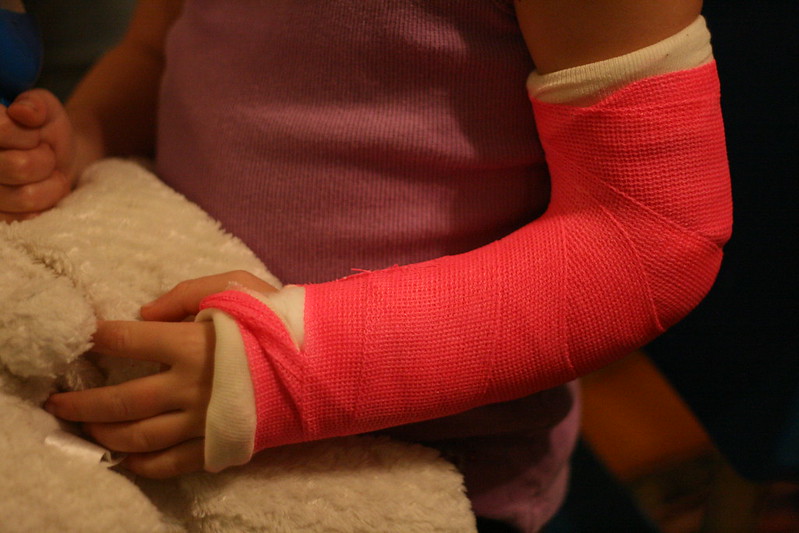Understanding the legal solutions available is essential for securing the compensation their child deserves.
When any vehicle accident causes injury to a child, parents are faced with many challenges and concerns that extend far beyond the immediate medical needs of their young ones. Managing these challenges often involves dealing with complex legal matters. The following post will explain the legal solutions available to parents.
Liability in Child Injury Claims
In child injury claims stemming from auto accidents, establishing liability is one of the first steps. It is key to comprehend the various forms of liability and the parties that may be held accountable.
The Role of Negligence
Negligence is a common basis for liability in auto accidents. To establish negligence, it must be demonstrated that the at-fault driver failed to exercise reasonable care, thus resulting in the accident and, subsequently, the child’s injuries.
Vicarious Parental Liability
Parents may be deemed responsible for their child’s actions in certain cases. If a teenager was the vehicle’s driver, parental liability could come into play under the doctrine of “vicarious liability.”
Third-Party Accountability
Apart from the driver and the child’s parents, third parties such as vehicle manufacturers or governmental entities might also share liability. However, this will occur only if their actions or products contributed to the accident or the child’s injuries.
The Legal Process in Child Injury Claims
Navigating the legal process in child injury claims is a multifaceted endeavor, but it is a necessary one when seeking compensation for the child’s injuries.
The Importance of Consulting an Attorney
Seeking legal representation from Yosha Law Firm is advisable in child injury claims. An experienced personal injury attorney can guide parents through the legal process, ensuring their rights are protected and advocating for fair compensation.
Initiating a Lawsuit
When negotiations with the at-fault party’s insurance company fail to yield a fair settlement, filing a lawsuit may become necessary. Your attorney will help you initiate the legal proceedings.
Evidence Collection and Case Preparation
Your attorney will work assiduously to collect evidence that supports your child’s case. This may include medical records, accident reports, and witness testimonies. Additionally, your attorney will prepare a compelling legal argument to establish liability.
Negotiations and Settlements
Many child injury claims are ultimately resolved through negotiations between the parties involved. Your attorney will represent your child’s interests and seek a fair settlement that covers their injuries and related damages.
Court Proceedings
In cases where a settlement cannot be reached, the matter may proceed to court. Your attorney will represent your child’s case, presenting evidence and arguments to a judge and jury.
How Does Insurance Play a Role in Child Injury Claims?
Comprehending insurance coverage is fundamental when dealing with child injury claims. Various types of insurance can come into play to compensate for the child’s injuries.
The At-Fault Driver’s Insurance
Typically, the at-fault driver’s liability insurance covers injuries caused by their negligence. Parents usually file a claim with the at-fault driver’s insurer to seek compensation for the child’s medical expenses and other associated damages.
Uninsured or Underinsured Motorist Coverage
Parents may need to rely on their insurance coverage if the at-fault driver lacks insurance or is underinsured. Uninsured or underinsured motorist coverage can bridge the gap and provide additional compensation.
The Role of Medical Payments Coverage
Medical payment coverage, often included in auto insurance policies, can assist in covering the child’s medical bills. Likely, this will be regardless of fault. It provides essential financial support during the initial stages of recovery.
Vital Steps to Take Following a Child’s Injury in an Auto Accident
After an auto accident involving a child, it is imperative to take the right steps to safeguard their rights and pursue compensation.
1. Seek Immediate Medical Attention

The child’s health should be the foremost concern. Seeking immediate medical attention is crucial to assess and address their injuries. Medical documents are crucial in establishing the extent of the child’s injuries during legal proceedings.
2. Document the Accident Scene
Whenever possible, documenting the accident scene through photographs and collecting witness contact information can provide valuable evidence when establishing liability.
3. Reporting the Accident to Law Enforcement
Reporting the accident and ensuring an official police report is generated is essential. This report may serve as a critical document during legal proceedings.
Child’s Compensation in Injury Claims
Compensation in child injury claims can encompass various damages, including (but not limited to) health-related bills, pain and suffering, and more.
- Covering medical expenses: Medical expenses, such as hospital bills, surgeries, therapy, and ongoing treatment, typically constitute the primary component of compensation in child injury claims.
- Addressing pain and suffering: Children may experience significant physical and emotional suffering as a result of the accident. Pain and suffering compensation provides financial support for these intangible losses.
- Accounting for future expenses and lost earnings: In cases where the child’s injuries result in long-term or permanent disability, compensation may also cover future medical costs and lost earning potential.
Don’t Let Your Children Suffer More Than They Need To
When a child sustains injuries in an auto accident, parents are thrust into a demanding and complex situation. Understanding the legal solutions available is essential for securing the compensation their child deserves. Parents can advocate for their child’s rights and well-being in the face of adversity.


Join the conversation!